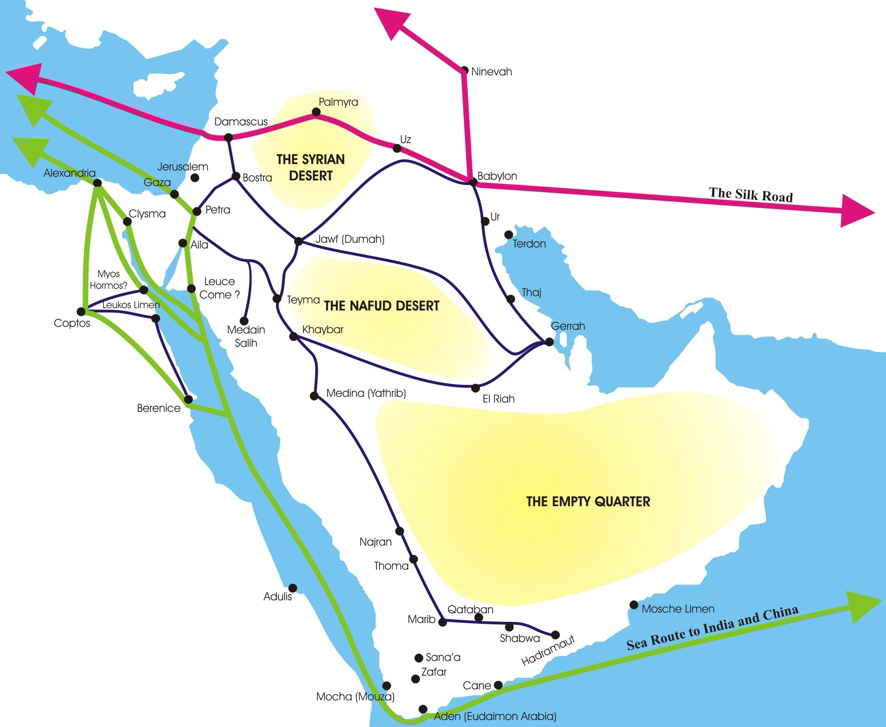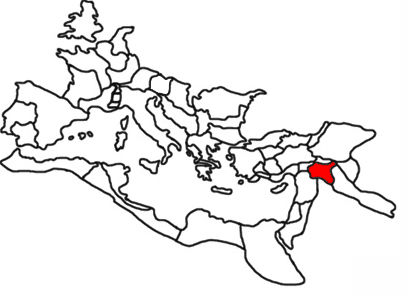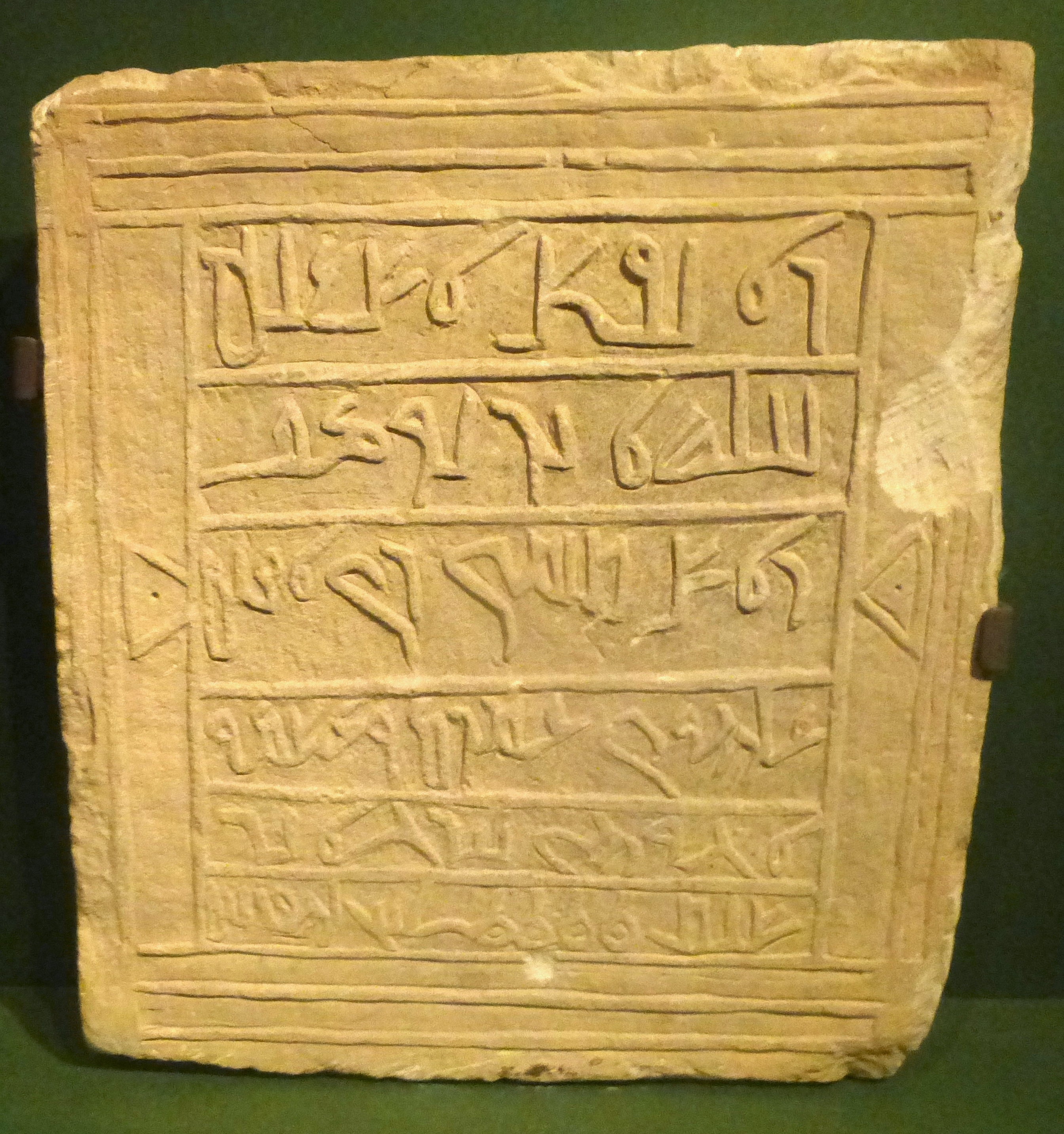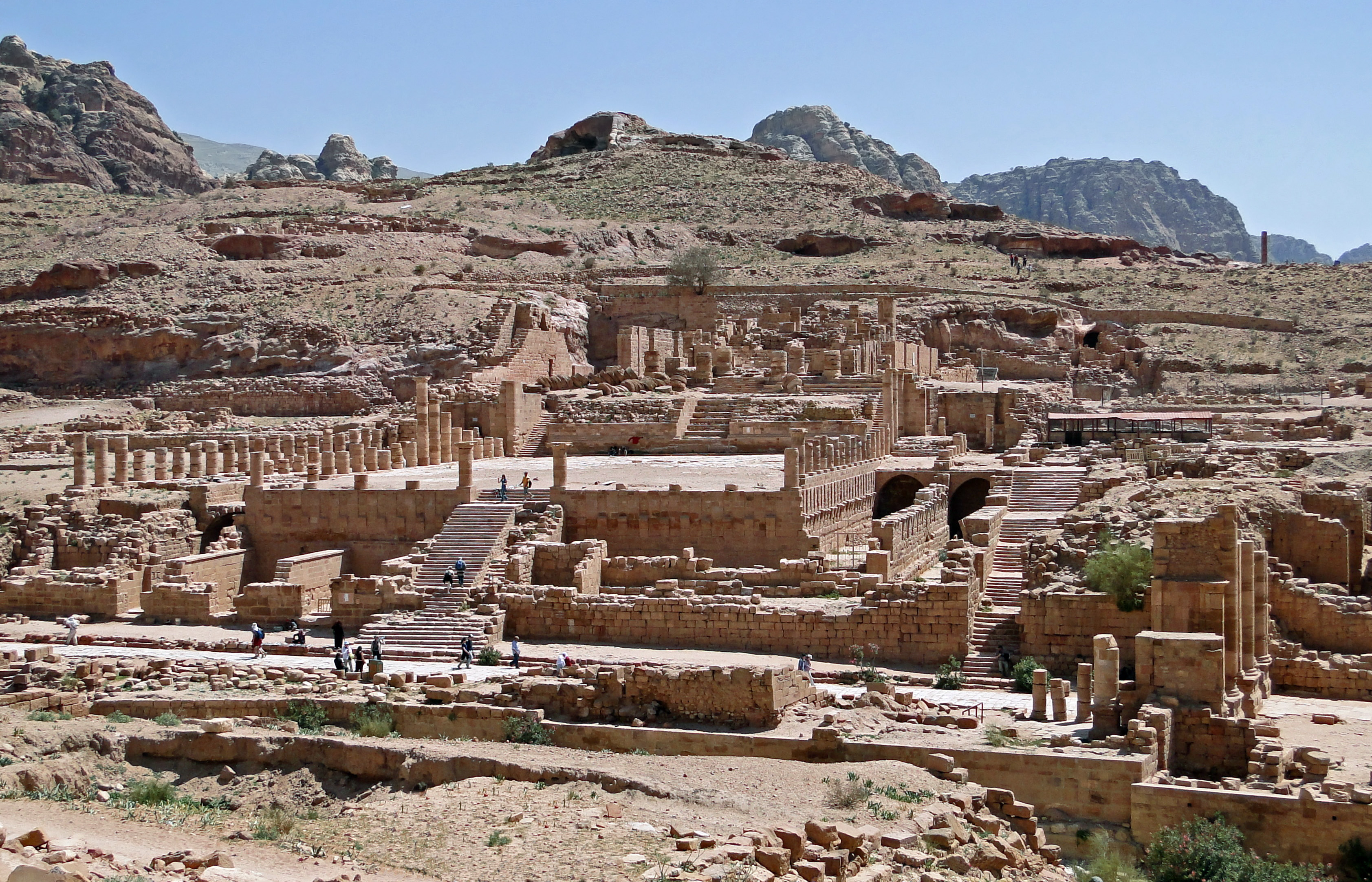|
Nabatea
The Nabataean Kingdom ( Nabataean Aramaic: 𐢕𐢃𐢋𐢈 ''Nabāṭū''), also named Nabatea () was a political state of the Nabataeans during classical antiquity. The Nabataean Kingdom controlled many of the trade routes of the region, amassing large wealth and drawing the envy of its neighbors. It stretched south along the Tihamah into the Hejaz, up as far north as Damascus, which it controlled for a short period (85–71 BC). Nabataea remained an independent political entity from the mid-3rd century BC until it was annexed in AD 106 by the Roman Empire, which renamed it to Arabia Petraea. History Nabataeans The Nabataeans were one among several formerly nomadic Arab tribes that roamed (later settled) the Arabian Desert and moved with their herds to wherever they could find pasture and water. They became familiar with their area as seasons passed, and they struggled to survive during bad years when seasonal rainfall diminished. The origin of the specific tribe of Arab nom ... [...More Info...] [...Related Items...] OR: [Wikipedia] [Google] [Baidu] |
Nabataeans
The Nabataeans or Nabateans (; Nabataean Aramaic: , , vocalized as ) were an ancient Arabs, Arab people who inhabited northern Arabian Peninsula, Arabia and the southern Levant. Their settlements—most prominently the assumed capital city of Raqmu (present-day Petra, Jordan)—gave the name ''Nabatene'' () to the Arabian borderland that stretched from the Euphrates to the Red Sea. The Nabateans emerged as a distinct civilization and political entity between the 4th and 2nd centuries BC, with Nabataean Kingdom, their kingdom centered around a loosely controlled trading network that brought considerable wealth and influence across the ancient world. Described as fiercely independent by contemporary Greco-Roman accounts, the Nabataeans were annexed into the Roman Empire by Emperor Trajan in 106 AD. Nabataeans' individual culture, easily identified by their characteristic finely potted painted ceramics, was adopted into the larger Greco-Roman culture. They converted to Christi ... [...More Info...] [...Related Items...] OR: [Wikipedia] [Google] [Baidu] |
Nabataean Aramaic
Nabataean Aramaic is the extinct Aramaic variety used in inscriptions by the Nabataeans of the Transjordan_(region), East Bank of the Jordan River, the Negev, and the Sinai Peninsula. Compared with other varieties of Aramaic, it is notable for the occurrence of a number of loanwords and grammatical borrowings from Arabic or other Ancient North Arabian, North Arabian languages. Attested from the 2nd century BC onwards in several dozen longer dedicatory and funerary inscriptions and a few legal documents from the period of the Nabataean Kingdom, Nabataean Aramaic remained in use for several centuries after the kingdom's annexation by the Roman Empire in 106 AD. Over time, the distinctive Nabataean script was increasingly used to write texts in the Arabic language. As a result, its latest stage gave rise to the earliest form of the Arabic script, known as History of the Arabic alphabet#Pre-Islamic phases, Nabataeo-Arabic. The phonology of Nabataean Aramaic can only be re ... [...More Info...] [...Related Items...] OR: [Wikipedia] [Google] [Baidu] |
Petra
Petra (; "Rock"), originally known to its inhabitants as Raqmu (Nabataean Aramaic, Nabataean: or , *''Raqēmō''), is an ancient city and archaeological site in southern Jordan. Famous for its rock-cut architecture and water conduit systems, Petra is also called the "Rose City" because of the colour of the sandstone from which it is carved. The city is one of the New 7 Wonders of the World and a UNESCO World Heritage Site. The area around Petra has been inhabited from as early as 7000 BC, and was settled by the Nabataeans, a nomadic Arab people, in the 4th century BC. Petra would later become the capital city of the Nabataean Kingdom in the second century BC. The Nabataeans invested in Petra's proximity to the incense trade routes by establishing it as a major regional trading hub, which gained them considerable revenue. Unlike their enemies, the Nabataeans were accustomed to living in the barren deserts and thus were able to defend their kingdom. They were particularly sk ... [...More Info...] [...Related Items...] OR: [Wikipedia] [Google] [Baidu] |
Aretas II
Aretas II (; Nabataean Aramaic: ''Ḥārītaṯ''; ''Arétās'') was the King of the Arab Nabateans. Succeeding Rabbel I, his reign began in 103 BCE and he ruled until 96 BCE. Aretas II was a contemporary of the Hasmonean king Alexander Jannaeus, whose expansionist policies were a direct threat to the Nabatean Kingdom. During the siege of Gaza by Jannaeus in 99, the besieged Gazans requested help from "Aretas, King of the Arabs", but he did not come to their aid and the city was destroyed. Aretas is credited with beginning Nabatean minting. Like his predecessor, the king's name as transcribed in Arabic Arabic (, , or , ) is a Central Semitic languages, Central Semitic language of the Afroasiatic languages, Afroasiatic language family spoken primarily in the Arab world. The International Organization for Standardization (ISO) assigns lang ... is ', or ', stemming from Harith which means "the collector, provider; Plowman; Cultivator". See also * List of rulers of ... [...More Info...] [...Related Items...] OR: [Wikipedia] [Google] [Baidu] |
Aretas III
Aretas III (; Nabataean Aramaic: ''Ḥārītaṯ''; Ancient Greek: ) was king of the Arab Nabataean kingdom from 87 to 62 BCE. Aretas ascended to the throne upon the death of his brother, Obodas I, in 87 BCE. During his reign, he extended his kingdom to cover what now forms the northern area of Jordan, the south of Syria, and part of Saudi Arabia. Probably the greatest of Aretas' conquests was that of Damascus, which secured his country's place as a serious political power of its time. Nabataea reached its greatest territorial extent under Aretas' leadership. Like his predecessors, the king's name as transcribed in Arabic is ', or ', stemming from Harith which means "the collector, provider; plowman; cultivator". Conquest of Damascus Damascus straddled the primary commercial route from the Mediterranean Sea to India and the Middle East. The city was taken from the loosening grip of the Seleucid Empire in 85 BCE by Aretas, who styled himself as Aretas Philhellen ('' Philhe ... [...More Info...] [...Related Items...] OR: [Wikipedia] [Google] [Baidu] |
List Of Nabataean Kings ...
The Rulers of Nabataea, reigned over the Nabataean Kingdom (also rendered as ''Nabataea'', ''Nabatea'', or ''Nabathea''), inhabited by the Nabataeans, located in present-day Jordan, south-eastern Syria, southern modern-day Israel, Sinai Egypt, and north-western Saudi Arabia. The queens of the later Nabataean Kingdom figure side by side with their husbands as co-rulers on their coins. List See also *Lists of office-holders References {{Reflist Sources''Jewish Virtual Library''*Martha Ross, ''Rulers and Governments of the World – Vol1, Earliest Times to 1491''. London & New York: Bowker Publishing Company, 1978. Nabataean monarchs Nabatea Nabatea Nabatean The Nabataeans or Nabateans (; Nabataean Aramaic: , , vocalized as ) were an ancient Arab people who inhabited northern Arabia and the southern Levant. Their settlements—most prominently the assumed capital city of Raqmu (present-day Petra ... [...More Info...] [...Related Items...] OR: [Wikipedia] [Google] [Baidu] |
Nabataean Religion
The Nabataean religion was a form of Religion in pre-Islamic Arabia, Arab polytheism practiced in Nabataea, an ancient Arab nation that was well established by the third century BCE and lasted until the Roman annexation in 106 CE.Patrich, Joseph. The Formation of Nabataean Art: Prohibition of a Graven Image Among the Nabateans. Jerusalem: Magnes, 1990. Print. The Nabateans were polytheistic, worshiping a wide variety of local gods, as well as deities such as Baalshamin, Isis, and Greco-Roman gods, including Tyche and Dionysus. They conducted their worship at temples, high places, and betyls. Their religious practices were mostly aniconic, favoring geometric designs to adorn sacred spaces. Much knowledge of Nabataean grave goods has been lost due to extensive looting throughout history. The Nabataeans performed sacrifices, conducted various rituals, and held a belief in an afterlife. Gods and goddesses Most of the deities in the Nabataean religion belonged to the List of pre-Islamic ... [...More Info...] [...Related Items...] OR: [Wikipedia] [Google] [Baidu] |
Malichus II
Malichus II (Nabataean Aramaic: ''Malīḵū'' or ''Malīḵūʾ'') was ruler of Nabatea from 40 to 70 AD. He was the son of Aretes IV and Huldu. Biography Malichus' reign is sometimes perceived as a period of declining Nabataean power, but this view depends in part on Nabataea having controlled Damascus in the period 34–40. The Romans had, however, diverted the routes of spice and perfume cargo shipments to Egypt. Rome was very powerful, so Malichus cooperated. In 66, a Jewish revolt occurred in Judaea. Malichus sent 5,000 cavalry and 1,000 infantry to help the Caesar Titus Titus Caesar Vespasianus ( ; 30 December 39 – 13 September AD 81) was Roman emperor from 79 to 81. A member of the Flavian dynasty, Titus succeeded his father Vespasian upon his death, becoming the first Roman emperor ever to succeed h ... crush the rebellion. Malichus II died in AD 70,Jane Taylor: ''Petra And the Lost Kingdom of the Nabataeans''. I. B. Tauris 2001, , p. 73 () and ... [...More Info...] [...Related Items...] OR: [Wikipedia] [Google] [Baidu] |
Obodas I
Obodas I (Nabataean Aramaic: ''ʿŌbōdaṯ''; ) was king of the Nabataeans from 96 to 85 BC. After his death, Obodas was worshiped as a deity. The king's name as transcribed in Arabic is ', which means "submission, obedience or worship (of god)". Life Obodas was the successor of Aretas II, from whom he inherited the war with the Hasmonean kingdom. He defeated them around 93 BCE on the Golan Heights. Then he ambushed Alexander Jannaeus near Gadara (Umm Qais), just east of the Sea of Galilee. Using camel cavalry, he forced Jannaeus into a valley where he completed the ambush, thereby getting revenge for the Nabateans' loss of Gaza. Moab and Gilead, two mountains east of the Dead Sea and the Jordan River, were returned. Around 86 BCE, the Seleucid ruler, Antiochus XII Dionysus, invaded Nabatea. During the Battle of Cana, Antiochus was slain and his demoralized army perished in the desert. The Nabataeans, seeing how Obodas defeated both the Hasmoneans and the Greeks, started ... [...More Info...] [...Related Items...] OR: [Wikipedia] [Google] [Baidu] |
Aretas IV
Aretas IV Philopatris (Nabataean Aramaic: 𐢊𐢛𐢞𐢞 𐢛𐢊𐢒 𐢗𐢓𐢆, ''Ḥārītaṯ Rāḥem-ʿammeh'' "Aretas, friend of his people") was the King of the Arab Nabataeans from roughly 9 BC to 40 AD. His daughter Phasaelis was married to, and divorced from, Herod Antipas. Herod then married his stepbrother's wife, Herodias. It was opposition to this marriage that led to the beheading of John the Baptist. After he received news of the divorce, Aretas invaded the territory of Herod Antipas and defeated his army. Like his predecessors, the king's name as transcribed in Arabic is ' or ', stemming from Harith which means "the collector, provider; plowman; cultivator". Rise to power Aretas came to power after the assassination of Obodas III, who was apparently poisoned. Josephus says that he was originally named Aeneas, but took "Aretas" as his throne name. An inscription from Petra suggests that he may have been a member of the royal family, as a descendant o ... [...More Info...] [...Related Items...] OR: [Wikipedia] [Google] [Baidu] |
Damascus
Damascus ( , ; ) is the capital and List of largest cities in the Levant region by population, largest city of Syria. It is the oldest capital in the world and, according to some, the fourth Holiest sites in Islam, holiest city in Islam. Known colloquially in Syria as () and dubbed, poetically, the "City of Jasmine" ( ), Damascus is a major cultural center of the Levant and the Arab world. Situated in southwestern Syria, Damascus is the center of a large metropolitan area. Nestled among the eastern foothills of the Anti-Lebanon mountain range inland from the eastern shore of the Mediterranean on a plateau above sea level, Damascus experiences an arid climate because of the rain shadow effect. The Barada, Barada River flows through Damascus. Damascus is one of the List of oldest continuously inhabited cities, oldest continuously inhabited cities in the world. First settled in the 3rd millennium BC, it was chosen as the capital of the Umayyad Caliphate from 661 to 750. Afte ... [...More Info...] [...Related Items...] OR: [Wikipedia] [Google] [Baidu] |






